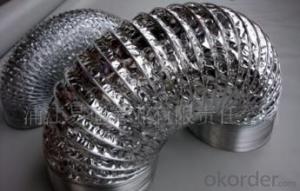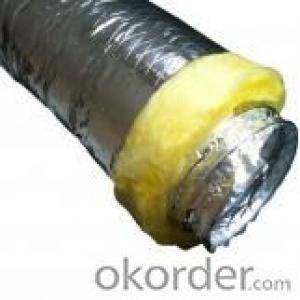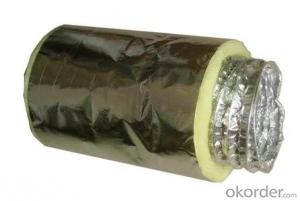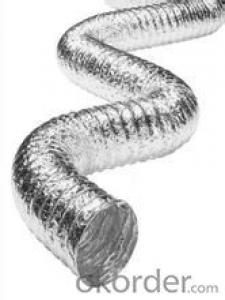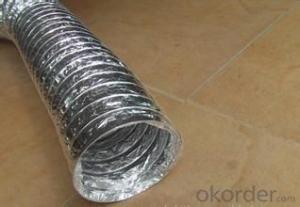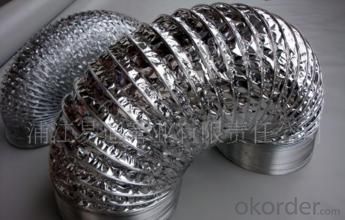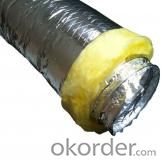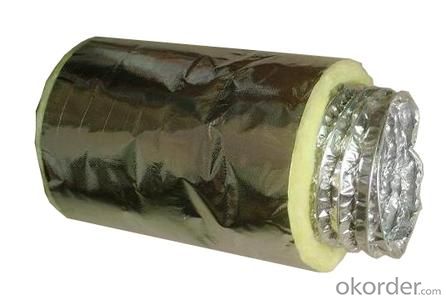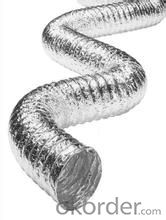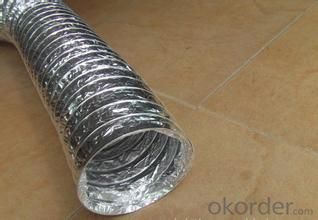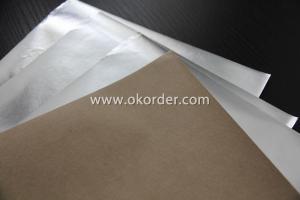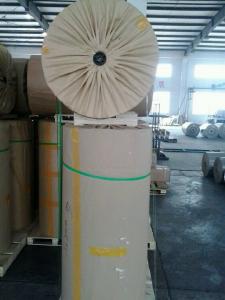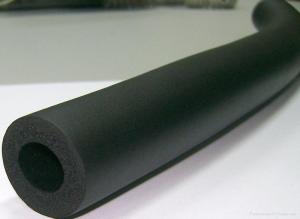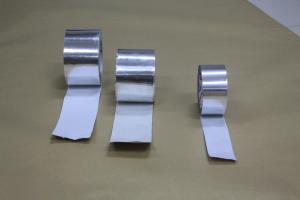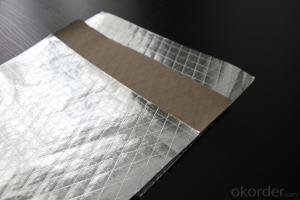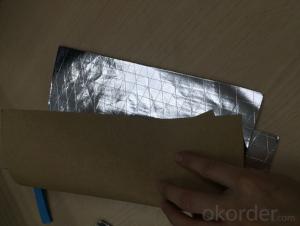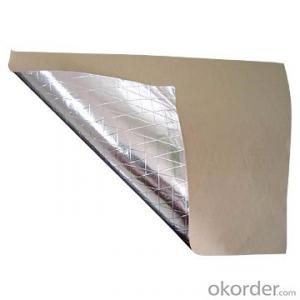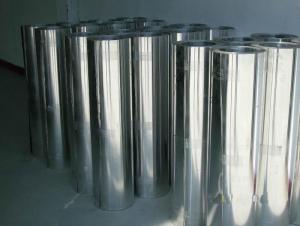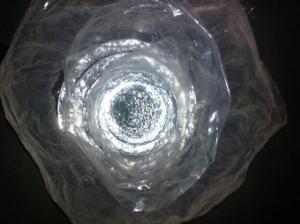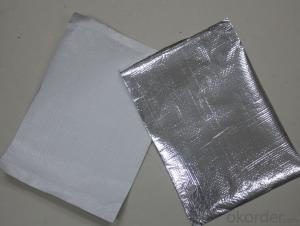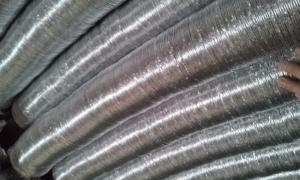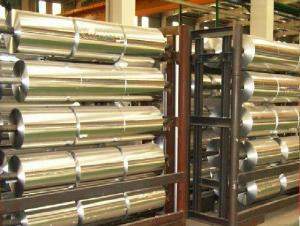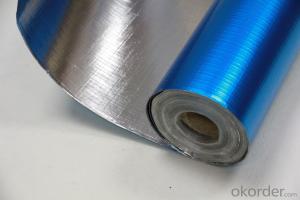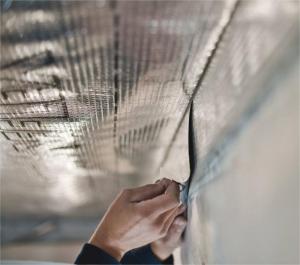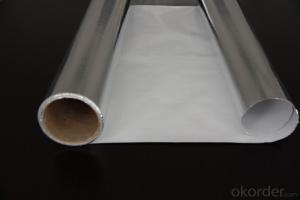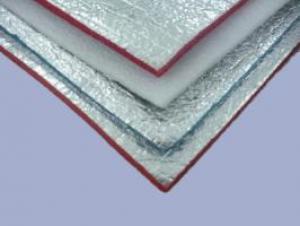Aluminum Foil Facing Insulated Flexible Ductings HVAC Ducting DIR Conditioning Ducting
- Loading Port:
- Shanghai
- Payment Terms:
- TT or LC
- Min Order Qty:
- 500 pc
- Supply Capability:
- 50000 pc/month
OKorder Service Pledge
OKorder Financial Service
You Might Also Like
Product Description:
Features and Characters of Aluminium Flexible Duct:
-Applied in Heating, Ventilation and Air Conditioning
-Non-insulated and insulated Flexible Duct offered
-Up to 150℃ and 250℃ high temperature
-Fire Retardant
-Corrosion Resistant
-High flexibility
-Convenient installation
-Non- toxic
Description of Aluminium Flexible Duct
Flexible Duct is widely used in Heating, Ventilation and Air Conditioning (HVAC) systems for air ventilation applications. Flexible Duct provides greater thermal efficiency to save energy. The product is also covered in a heavy duty, silver jacket for durability. The vapor barrier prevents condensation forming on the outside of ducts carrying air. Because it is flexible, it is easy to run around and through obstacles in the building.
Specification of Aluminium Flexible Duct:
Non-insulated Flexible Duct: Structure: Two-layer aluminum foils +1 layer of PET film.
Insulated Flexible Duct
Structure: 1 layer of Alu. Foil+1 layer PET film+ glass wool Outer jacket: 1 layer of Alu.foil Glass Wool Density: 16kg/m3; Thickness: 25mm
Combined Flexible Duct
Structure: flexible duct PVC jacket. REMARK: Special structure is available according to customer's requirements
Pictures of Aluminium Flexible Duct:
FAQ of Aluminium Flexible Duct:
1. What temperature maximum? Our products: 150℃ and 250℃
2. What MOQ? Our MOQ: 500 pcs
3. What payment terms? We accept T/T and L/C
4. Lead time: 10 days
5. Packing: Nest packing for non-insulated flexible duct, then into plastic bag for non-insulated flexible duct or packed in individual carton box.
- Q: The user is asking if they can reuse their old aluminum foil facing to create new ones once it becomes worn out.
- <p>No, you cannot create new aluminum foil facings from old, worn-out ones. Aluminum foil facings are typically made from a specific type of aluminum that is bonded to a substrate. Once it wears out, the aluminum layer is compromised and cannot be reused to make new facings. Recycling old aluminum foil is the best option to reduce waste and conserve resources. You can recycle aluminum foil, which will then be processed and turned into new aluminum products.</p>
- Q: What are the alternatives to using aluminum foil facing in various applications?
- <p>Yes, there are several substitutes for aluminum foil facing. These include: 1) Heavy-duty aluminum foil, which can be used for a more durable barrier. 2) Parchment paper, which is great for baking and resists tearing. 3) Silicone baking mats, reusable and non-stick. 4) Wax paper, useful for wrapping and storage but not for high heat. 5) Plastic wrap, suitable for food storage but not for cooking. 6) Tin foil, a cheaper alternative but less heat resistant. Always consider the specific needs of your application when choosing a substitute.</p>
- Q: Is it possible to use aluminum foil with a facing to create a sandwich wrap that is more durable and portable?
- <p>Yes, you can use aluminum foil facing to make a sandwich wrap that is more durable and easy to carry. Aluminum foil is known for its strength and resistance to tearing, which makes it a good choice for wrapping sandwiches. The facing can provide an additional layer of protection and can make the wrap more comfortable to handle. However, it's important to ensure that the foil does not come into direct contact with the food, as this could lead to potential health risks. Use a safe barrier, like parchment paper or a food-safe plastic wrap, between the foil and the sandwich to maintain椋熷搧瀹夊叏.</p>
- Q: Is it safe and effective to use aluminum foil with a reflective side for baking purposes?
- <p>Yes, aluminum foil facing can be used for baking. The shiny side of aluminum foil is often used to cover baking dishes to prevent food from drying out, to create a steam effect, or to reflect heat for even cooking. However, it's important to avoid direct contact between the foil and the heating elements of the oven to prevent fire hazards. Always follow the manufacturer's guidelines for safe use and placement of aluminum foil in your oven.</p>
- Q: Is it safe to use recycled aluminum foil for cooking or baking purposes?
- <p>Recycled aluminum foil facing is not recommended for cooking or baking. While aluminum foil itself is safe for cooking and can be used to cover dishes or line baking sheets, recycled foil may have impurities or contaminants from previous uses. It may also be thinner and less durable, leading to potential tearing or puncturing, which can result in food contamination. For safety and food quality, it's best to use new, high-quality aluminum foil for cooking and baking.</p>
- Q: Explain the differences between food wrap and aluminum foil facing in a few sentences.
- <p>Food wrap, also known as plastic wrap, is a thin, flexible plastic film used to cover and preserve food, keeping it fresh and protected from contaminants. It's typically clingy and transparent, allowing you to see the food inside. Aluminum foil facing, on the other hand, is a type of laminate that has a layer of aluminum foil bonded to a plastic film. This facing is used for various purposes, including increasing the barrier properties of the plastic, providing a shiny appearance, and enhancing the product's durability. It's often used in packaging to protect and preserve food items, but it's not as clingy or transparent as food wrap and is not meant for direct contact with food in the same way.</p>
- Q: Is it possible to use aluminum foil facing as a material for creating a potpourri sachet?
- <p>Yes, you can use aluminum foil facing to make a potpourri sachet. Aluminum foil is a versatile material that can be cut into small squares or shapes and filled with dried flowers, herbs, and spices to create a fragrant sachet. Ensure the foil is clean and free from any oils or residues before use. Seal the edges of the foil to prevent the contents from spilling out. While it's not as breathable as fabric, it can still hold the scent and keep the potpourri fresh.</p>
- Q: This question asks for methods to prevent food waste when utilizing food covers or containers.
- <p>To avoid food waste with food covers or containers, plan your meals ahead of time and only prepare what you can consume. Use the right size container for the amount of food you have. Store leftovers properly by cooling them down quickly and sealing containers tightly to prevent spoilage. Always check the contents of your containers before shopping to avoid buying duplicates. Use containers with clear labels to easily identify what's inside and its preparation date. Finally, rotate your food storage to use older items first and reduce waste.</p>
- Q: What are some effective ways to use aluminum foil in the kitchen?
- <p>Using aluminum foil effectively in the kitchen can enhance cooking and cleaning. Here are some tips: 1. Line baking sheets to prevent food from sticking and to make cleanup easier. 2. Create a foil packet for cooking fish, vegetables, or meats to lock in flavors and moisture. 3. Use foil to cover dishes during baking to prevent over-browning, then remove it for the last few minutes to achieve a crispy top. 4. Create a makeshift roasting rack by folding foil to elevate meats for even cooking. 5. Use foil to wrap handles of hot pots and pans to prevent burns. 6. Polish cookware with crumpled foil and water to remove stains and scratches. 7. Use foil to create a seal when storing leftovers in containers to keep food fresh. Always handle with care and avoid using foil with acidic or alkaline foods as it can react with the foil.</p>
- Q: Is it safe to use aluminum foil that has been recycled, specifically the foil with a shiny side facing outwards?
- <p>Using recycled aluminum foil facing is generally safe, as long as it meets the standards set by regulatory bodies. Recycled aluminum foil is often used in construction materials and insulation due to its durability and insulation properties. However, it's important to ensure that the recycled foil is free from contaminants and is properly processed. For applications where the foil comes into contact with food or the skin, it's crucial to use foil that has been certified safe for such uses. Always check the manufacturer's guidelines and certifications to ensure safety.</p>
Send your message to us
Aluminum Foil Facing Insulated Flexible Ductings HVAC Ducting DIR Conditioning Ducting
- Loading Port:
- Shanghai
- Payment Terms:
- TT or LC
- Min Order Qty:
- 500 pc
- Supply Capability:
- 50000 pc/month
OKorder Service Pledge
OKorder Financial Service
Similar products
Hot products
Hot Searches
Related keywords
